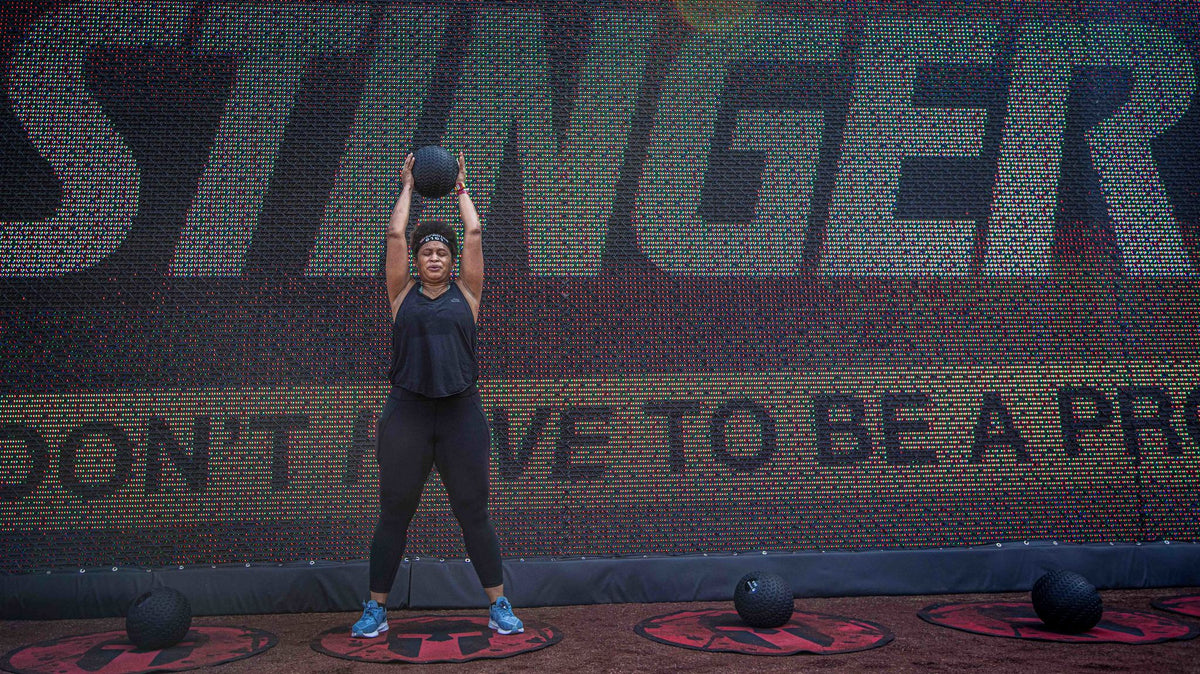Follow These 3 Steps to Increase Your Energy During Your Next Workout

The key to a successful workout is maintaining your energy throughout. But while some exercise experts like to make this complicated, the experts at Honey Stinger have a simple and effective solution.
Sticking to a three-step formula of “prepare, perform, and recover,” the producers of certified organic and honey-focused food for athletes deep-dived into the science pioneered by the World Health Foundation. The result? Satiating fuel that provides the right boost at the right time to help you increase your energy levels, maximize your workout, and be ready to return for more — and better — the next day.
And they’re definitely doing something right. A whole host of inspiring athletes not only stand behind Honey Stinger’s highly nutritional products, but also successfully execute their workouts living by those three simple and successful steps.
Related: The 3 Crucial Times You Need to Fuel Your Body While Training
Here’s why they do it, plus the reasoning behind why some of these top athletes suggest that you take these three critical steps if you want to keep crushing your workouts with energy to spare.
How to Increase Your Energy During Exercise and Training
Prepare
The first step to fueling for increased energy happens before you even lace up your sneakers.
“Fueling well before exercise allows you to get the most out of your workouts, prevents injury, and sets you up to recover better,” five-time obstacle course racing world champion Nicole Mericle explains. “Eating something two to three hours before a workout is especially important for women because our hormones and metabolism are different.”
Spartan Pro and healthcare professional Ally Tippetts agrees. Although she has a vast store of nutritional knowledge — having studied it for over 10 years — she originally had to do a lot of adapting and change-making to her meal plan, due to gastrointestinal issues.
“I was also expending more calories with increased exercise," she explains. “During my first few years of obstacle course racing, I would not eat sufficient amounts before, during, and after races. That led to cramping, running out of energy, injuries, and eventually binge eating at night.
“As I've been eating a well-rounded, pre-exercise meal and fueling during training and races, I've felt my best and been able to perform astronomically better just due to fueling properly.”
Her tip to anyone ramping up their training is this: “Ensure that you’re getting adequate fuel and electrolytes in the days before the race. Depending on the training or race, it's best to stay ahead of the game and fuel before you start feeling tired or running out of energy.”
Tippetts recommends Honey Stinger as her go-to fuel pick.
“One of my favorites is the Fruit Smoothie Energy Chews, because it’s great-tasting fuel that helps sweeten the burn!” she says.
Perform
Taking in fuel while exercising is the next necessary step if you’re intent on hard-charging your training. Proper nutrition at this juncture will help maximize performance and reduce the chances of injury or fatigue.
“I recommend people eat quicker carbohydrates with less fiber during an intensive workout,” Tippetts says. “During aerobic and anaerobic exercise, carbohydrates are the first fuel used by the body.”

If the workout is particularly intense, the Spartan Pro suggests adding in some fats and protein to your fuel, along with proper hydration that contains water and electrolytes to prepare, perform, and recover your best.
Related: This Is the Key to Keeping Energy and Electrolytes High When Training
Mericle seconds Tippetts' stance on the importance of hydration.
“If it's hot, I like to have water or an electrolyte drink — like Honey Stinger Rapid Hydration — with me,” she says.
Recover
Mericle notes that there's a host of reasons to refuel as soon as possible after a workout.
“These include restocking your glycogen stores so you'll be ready to go for your next workout, jump-starting protein synthesis (or rebuilding your muscles), and limiting further breakdown of muscle protein,” she says.
Ensuring that you’re eating carbs and protein is particularly important, as these are the macronutrients that help to reboot your energy levels, repair any muscle tears, and ease overall soreness.
“I aim to have a snack that includes a 4:1 or 3:1 ratio of carbs-to-protein,” the former Spartan World Champion reveals. “This could be a protein bar and a banana, pretzels and almond butter, or a smoothie, for example.”
Additionally, fitness experts recommend refueling within 30 to 60 minutes of a workout for maximum effect, claiming that a delay of carb consumption by as little as 2 hours after a workout may lead to 50% lower glycogen synthesis rates.
Related: This Is What Happens to Your Body If You Don't Eat After a Workout
And while not everyone feels like eating directly after training, something as simple and as easily digestible as a protein bar from Honey Stinger will promote fast nutrient absorption, kickstarting recovery and ensuring that you have the required energy to maximize your next workout (and each one after that).
So, follow these three simple steps — prepare, perform, and recover — and get ready to conquer possibly the best workout you’ve ever had!












